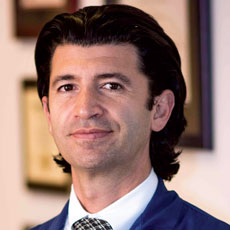
One of the most disturbing aspects of working closely with patients of nursing homes and rehabilitation facilities is the growing problem of elder abuse. The American Psychological Association reports as many as two million cases annually but suspects that many incidents are never reported. With the aging baby boomer population continuing to grow year by year, we can expect an increase in such cases.
Long-term care providers generally know to look for obvious signs of signs of elder abuse, such as when there is physical harm (e.g., welts, bruising, broken bones, sprains, etc), or sexual abuse (bruising around the breasts or genitals, unexplained venereal disease or genital infections and vaginal or anal bleeding).
But some forms of elder abuse are much more subtle and, sometimes, difficult to spot among resident caregivers or family members. Among these types of abuse are:
- Emotional Abuse – Patients being threatened, belittled or intimidated often resort to such behavior as rocking, mumbling to themselves or making sucking sounds.
- Financial Exploitation – Cash and missing items from the room, significant withdrawals made from their accounts, suspicious changes in wills or powers of attorney, unpaid bills and frequent ATM activity could signal abuse.
- Rackets and Schemes – The elderly are particularly vulnerable to rip-offs by telemarketers, sweepstakes prize schemes and phony charitable scams that aim to rob them of their money.
- Healthcare Fraud and Abuse — Examples include charging for services never rendered, double-billing for services, getting kickbacks for prescribing certain medications, overmedicating or undermedicating.
- Neglect – Unsanitary living conditions (dirt, bugs, soiled bedding, dirty clothes), weight loss, dehydration, not being bathed, unsafe living conditions and being deserted at public places are among the signs.
One of the most ubiquitous instances of elder abuse relate to pressure ulcer wounds. In fact, the Centers for Disease Control and Prevention estimates that 10% of nursing home/assisted care residents have or will develop these potentially deadly wounds. With 60,000 deaths occurring annually, regulatory agencies are cracking down on nursing homes and rehabilitation facilities. It is critical that nursing home and rehab facility staff recognize pressure wounds and deal with them in a timely fashion.
How can we make sure we treat wounds in a quick and cost-effective manor? Up until now, wound treatment was exorbitantly expensive. While the average hospital stay for the elderly is five days at a cost of $10,000, pressure ulcer wound-related stays are typically 13 or 14 days with costs ranging from $16,755 and $20,430. That’s not including expensive ambulance transportation to and from the hospital.
Now, many of these facilities are contracting with services that specialize in wound prevention and treatment – a far more effective and less costly approach. At Skilled Wound Care, we are seeing higher-than-average success rates of treatment with an average of 60% of these wounds being healed right at the onset intervention. Wounds with necrosis, slough or bioburden are typically debrided with 70% of them decreasing in size by 25% in the first month. A recent internal study of a 2,300-bed nursing home chain reduced its in-house pressure ulcer rate by 33%.
As the population continues to age, so too will be the instances of elder abuse. The suffering often takes place in silence. If you notice changes in a senior’s personality or behavior or if you notice any of the other signs of abuse, report it. Remember, it is not your role to verify that abuse is occurring, but you must alert others of your suspicions.
Board-certified general surgeon Bardia Anvar, M.D. is medical director of Skilled Wound Care, which services nursing facilities, patients and health plans throughout the United States for wound care. For more information visit SkilledWoundCare.com or call (866) WOUND-80 or (310) 445-5999.




